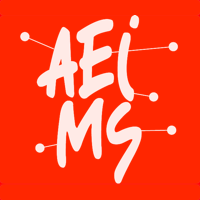UNiversity of dundee
Centre for Anatomy & Human Identification

MSc Medical Art
Medical Art is the depiction of anatomy, medical science, pathology and surgery. This may include illustrations, diagrams, 3D models or animations for use in medical education, specialist training, public communication, medico-legal evidence, and medical research.
The MSc in Medical Art at the University of Dundee is a dynamic collaboration between the Centre for Anatomy and Human Identification (CAHID) and Duncan of Jordanstone College of Art and Design (DJCAD). The MSc in Medical Art is professional masters programmes where students study a number of modules across both art and anatomy. The programme has been developed in response to the need for the provision of support for the satisfactory transition from undergraduate study to the establishment of professional practice within contemporary medical art fields. The programme recognises that in common with many academic areas of study, students who have successfully completed a first degree need further specialised training in order to enter the world of work.
The programme aim to produce professionals who can work at the leading edge of the genre and will provide a supportive environment to nurture innovative and creative ideas whilst working closely with relevant professional bodies and industry experts.
Semester 1 (60 credits)
In semester one the focus is on learning anatomy through hands on prosecution and cadaver study, observational drawing, and anatomical illustration. Students are also introduced to research methods and conduct a journal review.
- Gross Anatomy for Artists (40 credits)
- Life Art (10 credits)
- Research Methods (10 credits)
Semester 2 (60 credits)
In semester two the students specialise in medical art through two subject specific modules. Medical Art 1: Contemporary Theory and Practice, consists of a series of lectures and workshops giving students an overview of contemporary medical art practice while teaching a variety of practical skills including digital illustration, 3D modelling and working with CT and 3D scan data. During Medical Art 2: Communication and Education, students will gain experience of working with other professionals. They will have opportunity to observe surgery and work with anatomy staff within CAHID to produce two self-direct projects.
- Gross Anatomy for Artists (40 credits)
- Life Art (10 credits)
- Research Methods (10 credits)
Semester 2 (60 credits)
In semester two the students specialise in medical art through two subject specific modules. Medical Art 1: Contemporary Theory and Practice, consists of a series of lectures and workshops giving students an overview of contemporary medical art practice while teaching a variety of practical skills including digital illustration, 3D modelling and working with CT and 3D scan data. During Medical Art 2: Communication and Education, students will gain experience of working with other professionals. They will have opportunity to observe surgery and work with anatomy staff within CAHID to produce two self-direct projects.
- Medical Art 1: Contemporary Theory and Practice (30 credits)
- Medical Art 2 – Communication and Education (30 credits)
On successful completion of Semesters one and two there is an exit award of a Postgraduate Diploma in Medical Art.
Semester 3 (60 credits)
All students undertake an individual self-direct project resulting in a dissertation and exhibition.
To Apply
Applicants require:
- 2.1 (or equivalent) or higher in an art degree.
- 2.1 (or equivalent) or higher in an appropriate medical science degree*
All applicants will need to provide an appropriate portfolio of artwork and be able to demonstrate a high standard of English. Applicants with other qualifications or relevant experience will also be considered.
All applicants must be able to demonstrate a high standard of English.
* (e.g.: anatomy, anthropology, archaeology, dentistry, biology, forensic science, genetics, medicine, sociology).
Further information
MSc Medical Art
Dr Caroline Erolin
Centre for Anatomy & Human Identification
c.d.erolin@dundee.ac.uk
+44 (0)1382 388352
